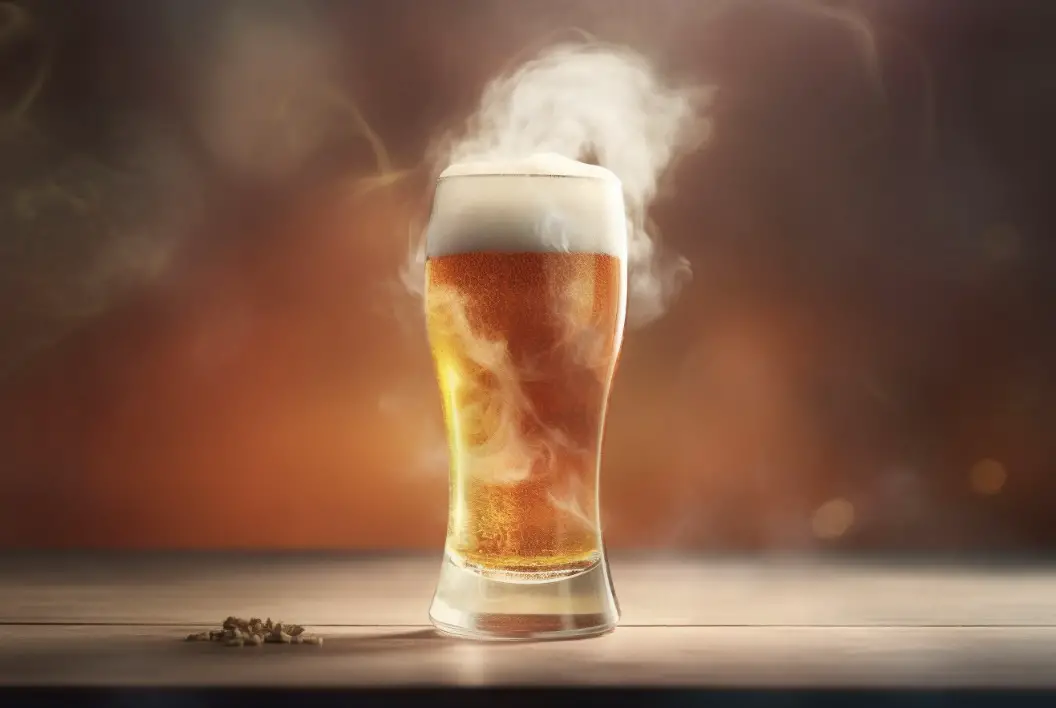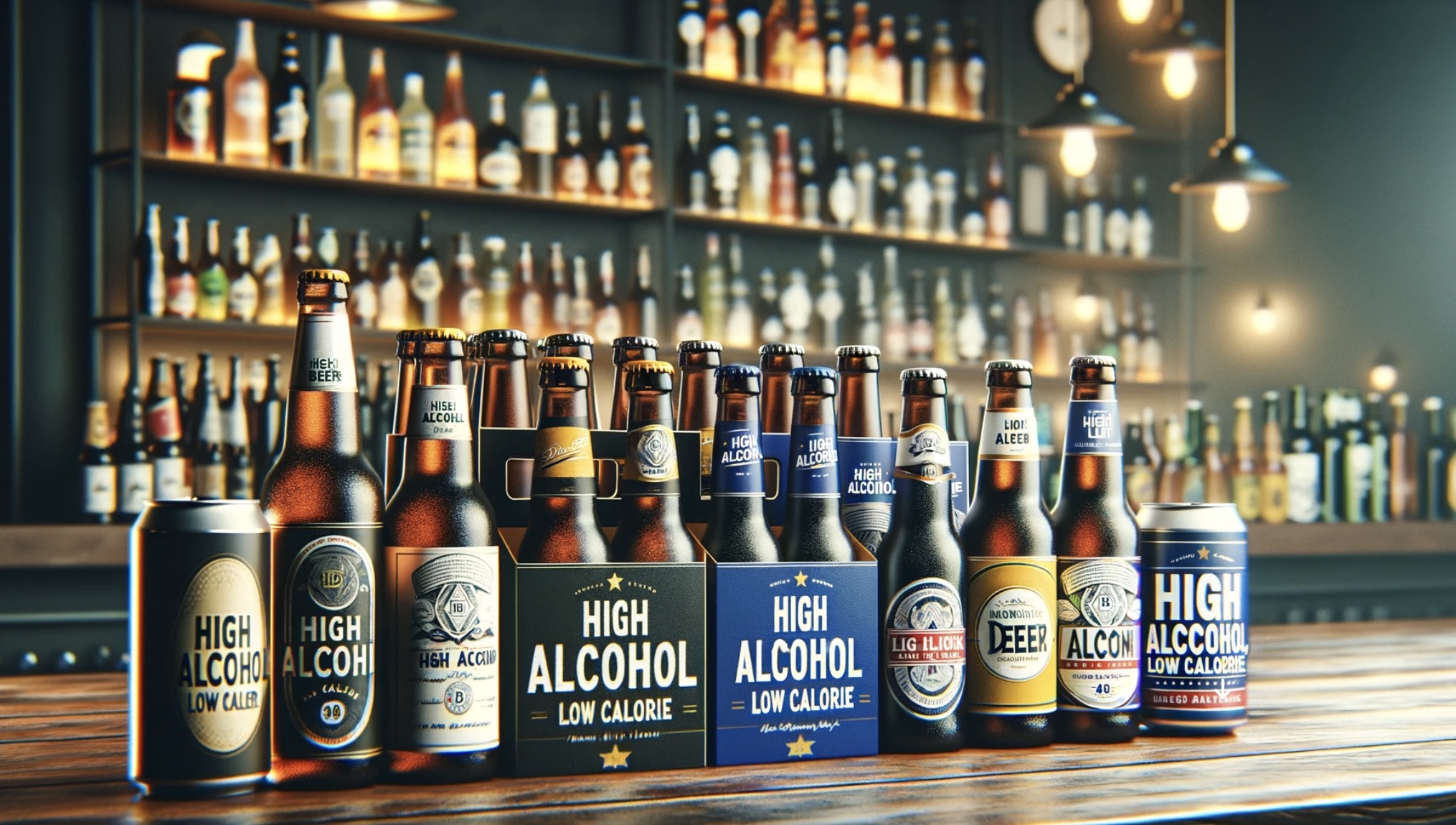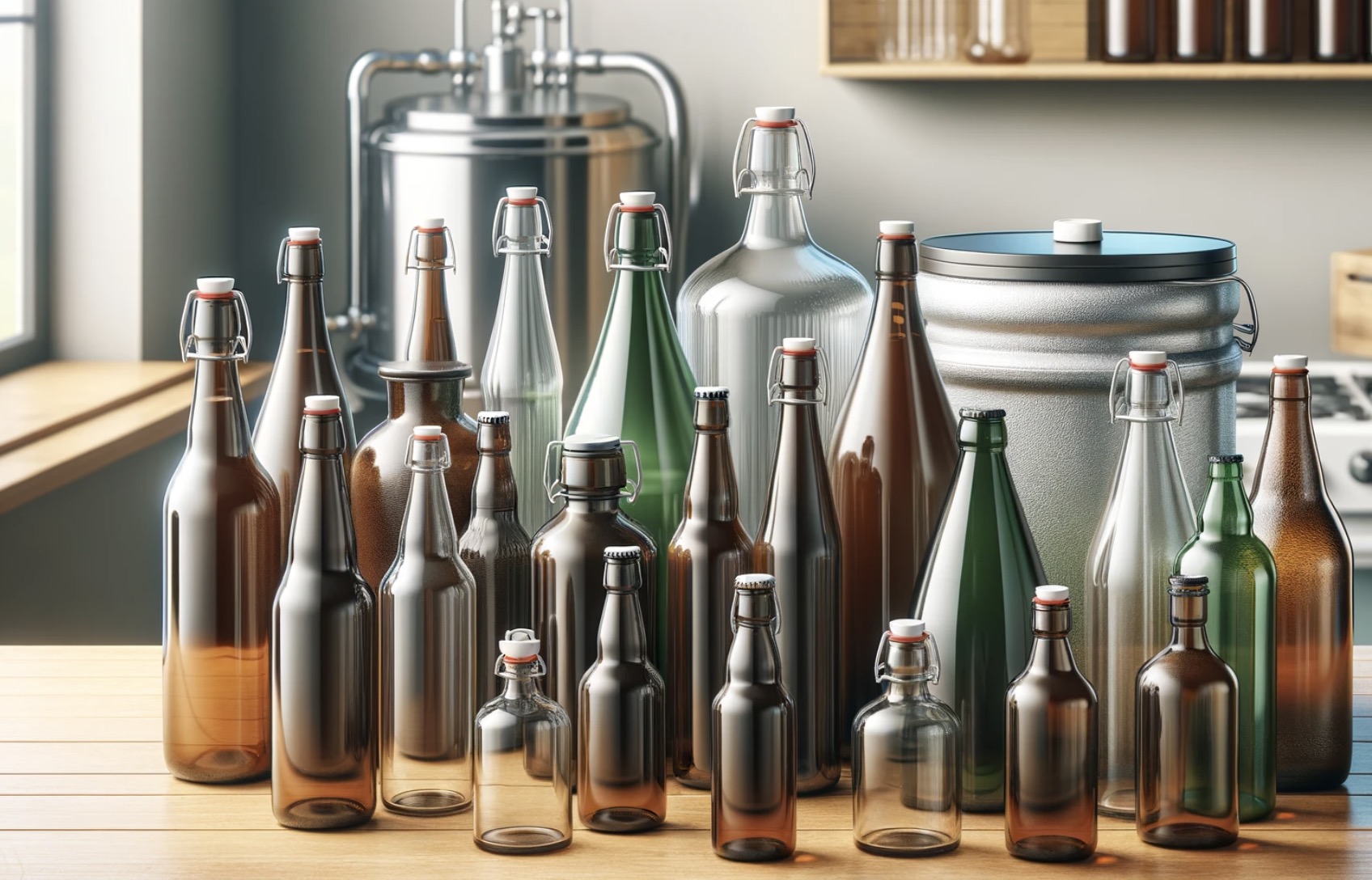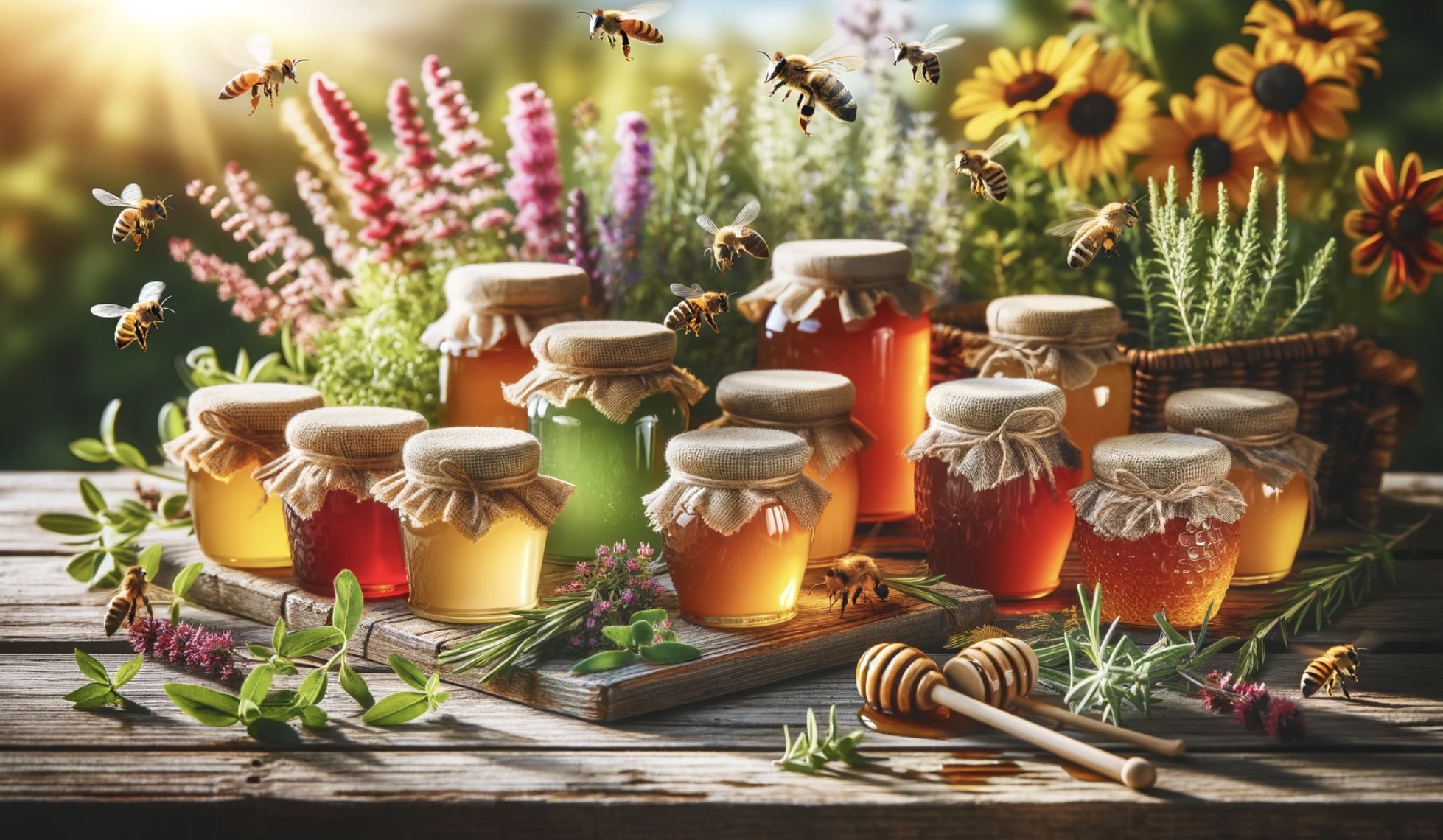Does beer lose alcohol when left open? The short answer is yes, but the change is minimal and it would take a significant amount of time for the alcohol content to decrease noticeably.
The process of alcohol evaporating from an open beer is slow but evident, and it can affect the taste and overall quality of the beer.
As an experienced brewer, I can assure you that I have faced this question many times and have conducted several experiments to determine the extent of alcohol loss in open beer. In this blog post, I will delve deeper into the factors that contribute to alcohol loss in beer and how oxidation affects the taste.
Evaporation and Oxidation: The Culprits Behind Alcohol Loss
Evaporation is a crucial factor contributing to the loss of alcohol content in beverages like beer. Evaporation is the process by which a liquid changes into a vapor or gas state when exposed to air or heat. This phenomenon can lead to the gradual reduction of alcohol content in alcoholic beverages, including beer.
How Evaporation Affects Alcohol Content
When beer is stored or served, it is exposed to the surrounding environment, which includes air. Alcohol has a lower boiling point compared to water, which means it can evaporate more readily. As beer is exposed to air and ambient temperatures, some of the alcohol molecules present in the liquid can transition from the liquid state to the vapor state. This results in a gradual decrease in the overall alcohol content of the beer.
Factors Influencing Evaporation
Several factors can influence the rate of evaporation and, subsequently, the loss of alcohol content in beer:
- Surface Area: Larger surface areas exposed to air can lead to faster evaporation. This is why open containers of beer are more susceptible to alcohol loss than sealed ones.
- Temperature: Higher temperatures can accelerate the evaporation process. Warmer environments can lead to increased alcohol evaporation and more rapid changes in alcohol content.
- Airflow: Adequate ventilation and airflow around the beer can facilitate the escape of alcohol vapors, enhancing the evaporation process.
- Time: Longer exposure to air and time increases the chances of alcohol molecules transitioning from liquid to vapor form.
Minimizing Evaporation-Related Alcohol Loss
To minimize the impact of evaporation on alcohol content, brewers and consumers can consider the following steps:
- Sealing: Keep beer containers tightly sealed when not in use to reduce the exposure to air and minimize evaporation.
- Storage Conditions: Store beer in cool and stable environments to slow down the rate of evaporation. Avoid exposing beer to significant temperature fluctuations.
- Serving Practices: Pour and serve beer in a controlled manner, minimizing excessive agitation that can encourage evaporation.
- Limited Air Exposure: When pouring beer, aim to minimize splashing and ensure that the container’s opening is not exposed to air for prolonged periods.
- Timely Consumption: Enjoy beer within a reasonable timeframe after opening to mitigate extended exposure to air and the subsequent alcohol loss.
In conclusion, while oxidation plays a role in the degradation of beer quality, evaporation also contributes to the gradual reduction of alcohol content in beverages like beer. By understanding the factors influencing evaporation and implementing appropriate storage and serving practices, both brewers and consumers can help preserve the intended alcohol content and overall flavor of the beer.
What is Oxidation?
Oxidation is a chemical reaction that occurs when a substance comes into contact with oxygen, resulting in the loss of electrons.
In the case of beer, oxidation occurs when the beer is exposed to oxygen, causing the alcohol to turn into acetic acid and other compounds to degrade.
This process speeds up significantly if certain, acetic acid, bacteria are present with oxygen.
While oxidation can negatively impact the flavor of the beer, it is a very slow process and the alcohol content will not decrease significantly over a short period of time.
The Effects of Oxidation on Beer Flavor
The primary concern of oxidation in beer is not the loss of alcohol, but the degradation of the flavor. Oxidation can cause beer to taste stale, cardboard-like, or even sour.

This is because the chemical reactions that occur during oxidation can produce off-flavors and negatively impact the overall quality of the beer. Hops, which contribute to the bitterness and aroma of beer, are particularly susceptible to oxidation, causing the hop aroma and flavor to fade over time.
Factors Influencing Alcohol Loss
There are several factors that can influence the rate at which alcohol is lost from an open beer. These factors include the temperature, surface area, and humidity of the environment.
Temperature
Higher temperatures can increase the rate of alcohol evaporation, causing the alcohol content of an open beer to decrease more rapidly. So, if you leave your beer in a warm environment, it is more likely to lose its alcohol content faster than if it were stored in a cooler location.
Surface Area
The surface area of the beer exposed to air also plays a role in alcohol evaporation. A larger surface area allows for more contact between the beer and the air, leading to faster alcohol evaporation. This means that a beer in a wide, shallow container will lose alcohol more quickly than one in a narrow, deep container.
Humidity
The humidity of the environment can also affect alcohol evaporation. In areas with high humidity, the air is already saturated with moisture, making it harder for the alcohol to evaporate. Conversely, in low-humidity environments, the air can absorb more moisture, leading to faster alcohol evaporation.
Beer Storage: How to Minimize Alcohol Loss
Properly Seal the Container
To minimize the loss of alcohol in your beer, it is crucial to properly seal the container. This will prevent the beer from coming into contact with excess oxygen and slow the oxidation process. If you’re storing beer in a bottle, use a bottle cap or airtight stopper to minimize the contact with air. If you’re using a growler, make sure the lid is tightly secured.
Store in a Cool, Dark Place
As mentioned earlier, temperature plays a significant role in alcohol evaporation. To minimize alcohol loss, store your open beer in a cool, dark place, such as a refrigerator or cellar. This will help slow down the oxidation process and maintain the quality of your beer.
The Role of Carbonation
Carbonation can also play a role in alcohol loss in open beer. When beer is carbonated, the carbon dioxide (CO2) gas dissolves in the liquid, forming carbonic acid. This carbonation provides a protective barrier that can slow the rate of alcohol evaporation.
However, once a beer has been opened and exposed to air, the carbonation will begin to dissipate, reducing this protective barrier. As the carbonation decreases, the rate of alcohol evaporation may increase.
Conclusion
In conclusion, beer does lose alcohol when left open, but the change is minimal and it would take a significant amount of time for the alcohol content to decrease noticeably.
The primary concern with open beer is the oxidation process, which can negatively impact the flavor and overall quality of the beer.
To minimize alcohol loss and maintain the quality of your beer, store it in an airtight container and keep it in a cool, dark place.
Here are 10 key facts about alcohol loss in open beer:
1. Oxidation is the process responsible for alcohol loss in open beer.
2. Oxidation can cause beer to taste stale, cardboard-like, or even sour.
3. Hops are particularly susceptible to oxidation, causing the hop aroma and flavor to fade over time.
4. Temperature, surface area, and humidity can influence the rate of alcohol evaporation.
5. Higher temperatures and larger surface areas increase the rate of alcohol evaporation.
6. Low humidity environments can also lead to faster alcohol evaporation.
7. Properly sealing the container can slow the oxidation process and minimize alcohol loss.
8. Storing open beer in a cool, dark place can help maintain its quality.
9. Carbonation provides a protective barrier that can slow the rate of alcohol evaporation.
10. As carbonation decreases, the rate of alcohol evaporation may increase.




